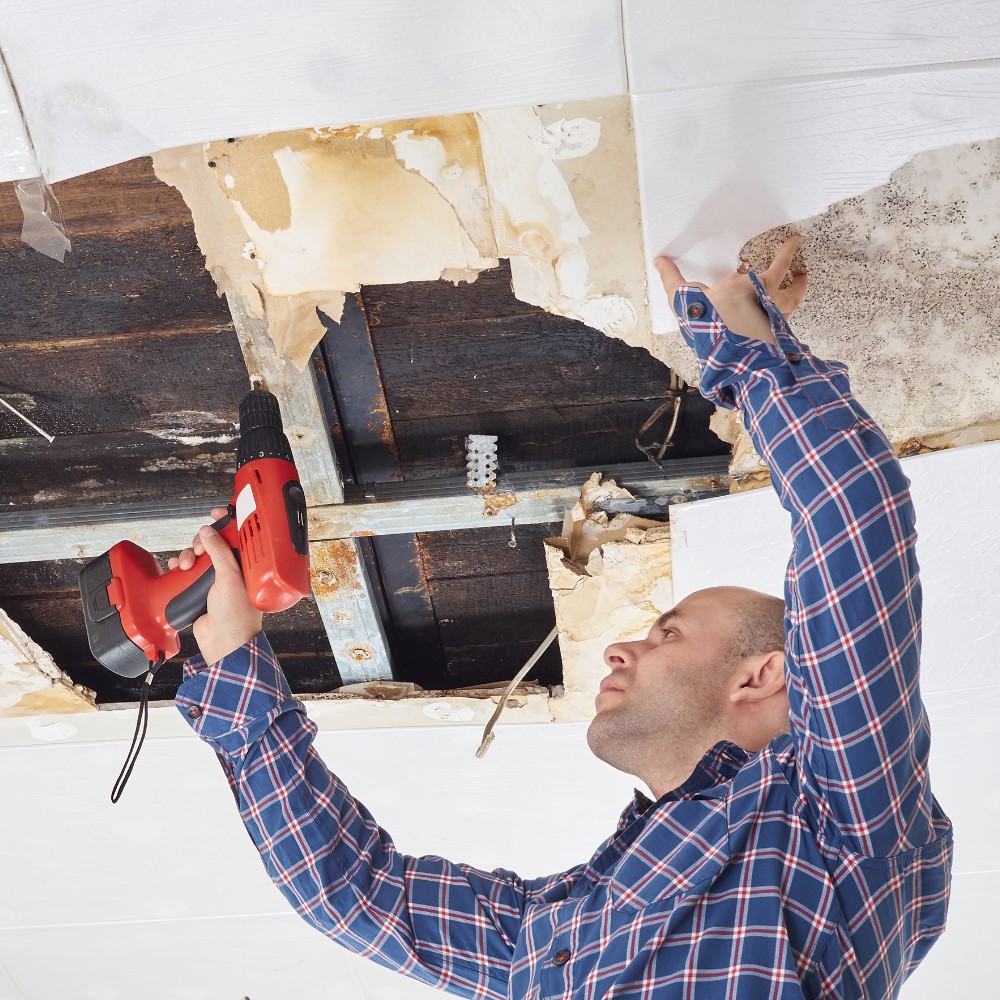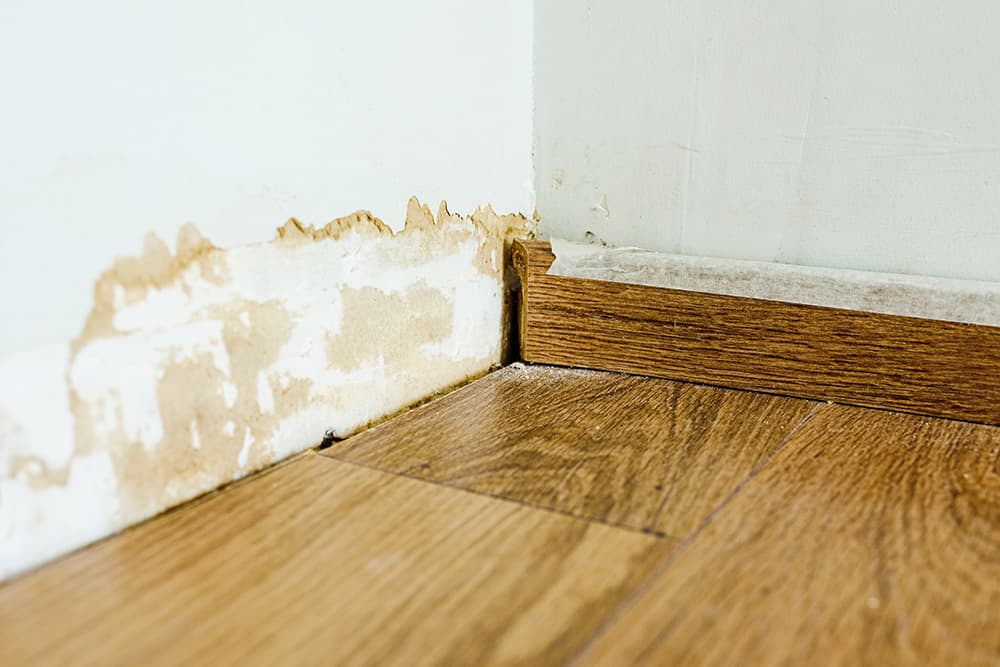Water Mitigation Company with Proven Track Record of Success in Restoration
The Refine of Water Damages Cleaning: Guaranteeing Your Home Is Brought Back Effectively
Water damage can be a complicated obstacle for home owners, necessitating a structured and meticulous clean-up procedure to bring back safety and capability. A comprehensive analysis is essential to determine the extent of the damage and establish the suitable remediation actions. Following this, efficient water removal techniques play an essential function in mitigating additional injury. However, the nuances of drying, disinfecting, and eventual repair are just as crucial and commonly overlooked. Understanding these stages can make a substantial distinction in the end result of your home's reconstruction, motivating a closer consider what each step involves.
Examining the Damages
Upon uncovering water damages, the initial step is to thoroughly evaluate the extent of the impact. This initial analysis is vital, as it aids establish the essential actions for efficient cleaning and restoration. Begin by examining the affected locations, consisting of wall surfaces, ceilings, floorings, and individual possessions, to identify the resource of the water breach, whether from flooding, leaks, or condensation.
Documenting the damages is necessary for both insurance policy claims and planning reconstruction initiatives - damage restoration services. Use pictures and composed notes to capture the severity of the damages, noting any kind of afflicted structural components and materials. Pay unique interest to areas that might not be promptly visible, such as behind walls and under rugs, as hidden wetness can lead to more issues, including mold development
Furthermore, analyze the timeline of the water exposure. Eventually, a comprehensive evaluation lays the foundation for an effective water damage cleanup procedure, making certain that all affected areas are attended to properly and thoroughly.
Water Extraction Methods

Experts commonly employ submersible pumps for larger volumes of water, which can quickly minimize flooding in basements or other impacted areas. For smaller quantities, wet/dry vacuum cleaners are frequently utilized to extract residual moisture from carpetings and tough surfaces. Furthermore, utilizing portable extractors enables targeted removal in confined spaces or locations with fragile products.
In circumstances of contaminated water, such as sewer or floodwater, progressed removal strategies may involve using biohazard equipment to make sure security and compliance with health regulations. High-powered removal devices are crucial in decreasing water retention in architectural materials, which can lead to mold and mildew development and structural degeneration if not addressed immediately.
Inevitably, the effectiveness of water removal methods plays a pivotal duty in the total success of the water damage cleaning procedure, laying the groundwork for subsequent reconstruction initiatives.
Drying and Dehumidification
As soon as standing water has been successfully drawn out, the next critical stage in the water damage clean-up procedure is drying out and dehumidification. This step is necessary to protect against additional damages and mold and mildew growth, which can happen within 24 to 48 hours in moist environments.
To accomplish effective drying out, specialized devices such as industrial-grade air movers and dehumidifiers is utilized. Air movers flow air across damp surfaces, improving evaporation prices, while dehumidifiers reduce moisture degrees airborne, advertising a helpful environment for drying out. The mix of these devices guarantees that dampness is drawn out from furnishings, floors, and wall surfaces, permitting them to dry extensively.
It is necessary to check the drying out procedure carefully. Specialists frequently utilize dampness meters to assess the moisture content in various materials, making certain that all influenced areas get to appropriate dry skin degrees. This meticulous approach assists to stop hidden moisture pockets here are the findings that could lead to architectural damages or undesirable mold and mildew development.

Cleaning and Sanitizing
After the drying out and dehumidification phase is total, the next important step in water damage cleanup will homeowners insurance cover water damage is cleaning and sterilizing the affected locations. This process is crucial to prevent the development of mold and mildew, microorganisms, and various other virus that prosper in moist atmospheres.
The cleansing phase usually involves removing any kind of particles, dust, and pollutants from surfaces making use of specialized cleansing agents. For hard surfaces, a mix of soap and water or industrial cleaning items is commonly utilized. Soft materials, such as furniture and rugs, may call for a lot more substantial cleaning approaches, consisting of steam cleansing or deep extraction methods, to make sure complete sanitation.

Sterilizing follows cleansing, making use of EPA-approved disinfectants to remove dangerous microorganisms. This action is important, specifically in areas that might have entered into contact with floodwaters or sewage, as these resources can position significant health threats.
Furthermore, it is very important to deal with any kind of remaining odors, which might require the usage of odor neutralizers or sophisticated strategies like ozone therapy. Proper cleaning and sterilizing not just restore the security and health of your home yet also prepared for effective reconstruction and repair work in subsequent stages of the water damage clean-up procedure.
Reconstruction and Repairs

When the evaluation is complete, reconstruction initiatives can begin. In addition, flooring may need comparable interest, depending on the degree of water exposure.
It is crucial to involve experienced repair experts during this procedure, as they possess the knowledge to handle intricate repair services effectively. They can help alleviate potential future problems, such as mold and mildew development or structural instability, therefore making certain a habitable and secure living environment. Inevitably, effective reconstruction and repair work bring back the home's additional info integrity and enhance its general worth.
Final Thought
In verdict, the process of water damage clean-up is essential for bring back a home to its pre-damage problem. Each stage, from assessing the damage to carrying out efficient water removal techniques, complied with by complete drying out, sanitizing, and required fixings, plays an important function in guaranteeing safety and compliance with structure standards. Effective execution of these actions not just minimizes prompt damages but also improves the long-lasting stability and value of the property.
Water damage can be a difficult difficulty for homeowners, necessitating a thorough and organized cleanup procedure to bring back security and functionality. Inevitably, a detailed assessment lays the foundation for a successful water damage clean-up procedure, making certain that all influenced areas are addressed effectively and extensively.
Efficient water extraction techniques are necessary in mitigating damages and avoiding additional complications adhering to a water invasion occasion.In conclusion, the procedure of water damages clean-up is crucial for recovering a home to its pre-damage condition. Each stage, from evaluating the damages to implementing efficient water extraction methods, adhered to by complete drying, sterilizing, and necessary repair services, plays a vital duty in guaranteeing safety and security and compliance with structure standards.